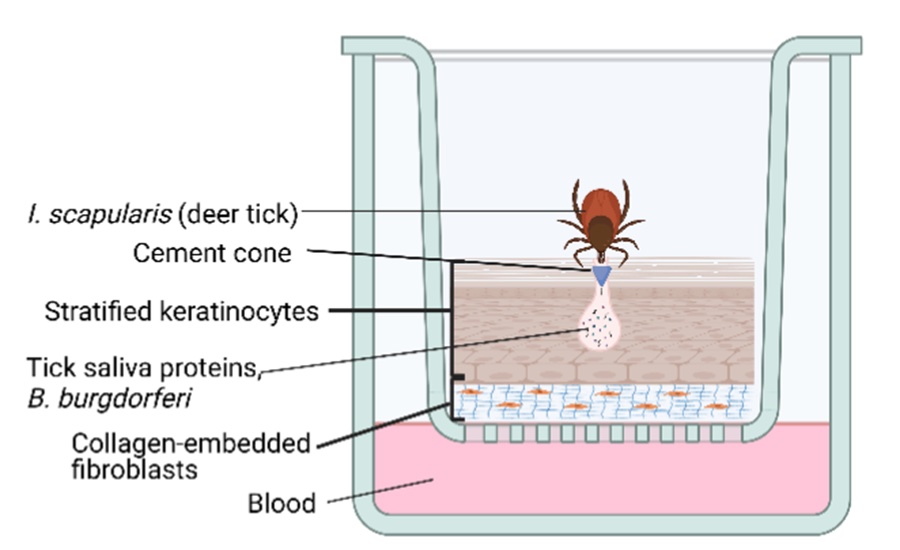Brinkworth Lab
Vector/Pathogen Relations
Amanda Brinkworth, PhD
Assistant Professor, UNMC Department of Pathology, Microbiology and Immunology

Adaptation of an organotypic human skin model to study tick transmission of pathogens

A diagram of the 3D-organotypic human skin model made up of stratified keratinocytes on a dermal collagen scaffold with embedded fibroblasts. Tick feeding at the skin surface enables formation of a feeding pit that includes pathogen transmission and blood uptake from the bottom well.
The laboratory of Amanda Brinkworth, PhD, utilizes innovative advances in tissue engineering, single-cell transcriptomics, and confocal microscopy to reveal the mechanisms used by bacterium to colonize human epithelial tissues and evade initial immune responses at the primary infection site.
The areas where tick-borne infections are occurring is rapidly expanding due to changes in climate and changes in host reservoir habitats and migration patterns. The deer tick (Ixodes scapularis) and gulf-coast tick (Amblyomma americanum) are carriers of many human pathogens and have invaded the Midwestern U.S. in recent years.
We focus our efforts on generating an organotypic human skin model that can support tick feeding and enable investigation of the Lyme disease-causing bacteria borrelia burgdorferi following transmission by deer ticks into human skin.
When untreated, Lyme disease-causing bacteria can survive long-term in humans, migrating to distant collagen-rich tissues to cause debilitating sequelae including cardiac disease, neurological dysfunction and rheumatoid arthritis. There is a major gap in knowledge regarding the timing of escape of borrelia from human skin into vasculature and the extent of colonization at the tick bite site.
We are making novel adaptations (vasculature, immune cells, ECM composition) to a 3D-organotypic stratified human skin model to enable tick feeding and pathogen transmission, which we will utilize to study the dynamics of human skin colonization by borrelia burgdorferi and other tick-borne pathogens. We also plan to utilize this novel reproducible and scalable human skin model to test prophylactic treatments following a tick bite.
Dr Brinkworth also collaborates on bacteriology research: Brinkworth Lab Chlamydia Research